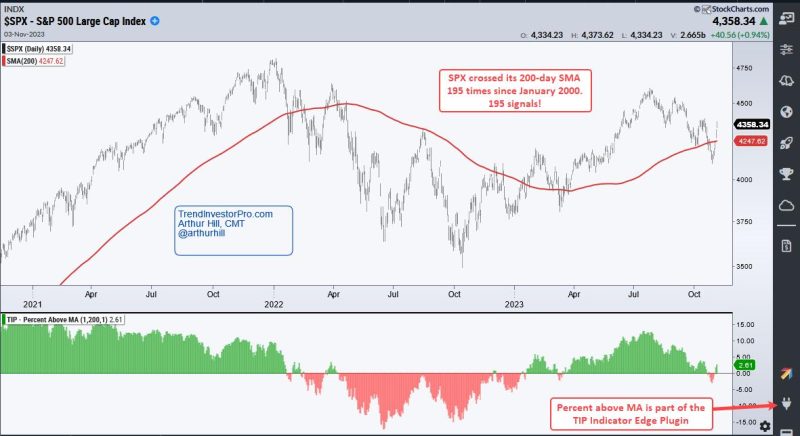In the financial markets, the 200-day simple moving average (SMA) is seen as a tool used to determine the long-term trend of a security’s price. This tool is praised for its ability to quickly identify shifts in the overall sentiment of a security. As the price moves, the 200-day SMA takes an average of the pricing data from the last 200 days, creating a “trend line”. In the battle for the 200-day SMA, a security must remain above this trend line for more than five consecutive days.
What does this have to do with the markets?
The main purpose of the 200-day SMA is to help investors and traders identify the underlying market trend. If the security’s price stays above the SMA for five consecutive days, this is usually seen as a sign that the security is in an up-trend. On the other hand, if the price falls below the SMA, it can indicate a downward trend in the market. As such, this metric can be used by investors and traders to quickly identify trends in the markets, and adjust their strategies accordingly.
Who will win the battle for the 200-day SMA?
The battle for the 200-day SMA can be seen as an ongoing struggle between bullish and bearish investors, each battling to have the security stay above or below the 200-day SMA. Ultimately, the winner will depend on the sentiment of the markets, as well as overall economic and political conditions. With economic and political tensions on the rise, the battle for the 200-day SMA is likely to remain highly contested in coming months and years.
In conclusion, the 200-day SMA is a valuable technical indicator for investors and traders seeking to quickly identify the overall trend of a security. As the battle for the 200-day SMA continues, the winner of the battle will depend on the sentiment and economic/political conditions prevailing in the markets. All in all, this metric remains a useful tool for investors to keep track of the ever-changing sentiment in the markets.






